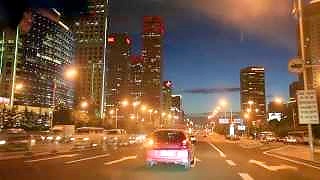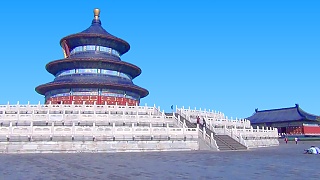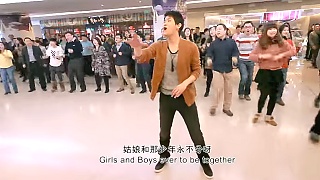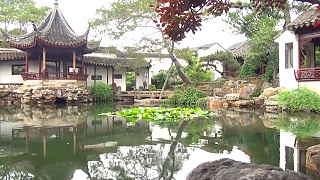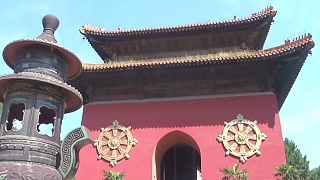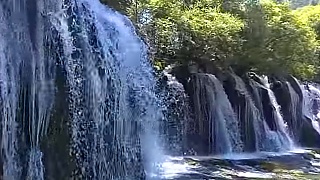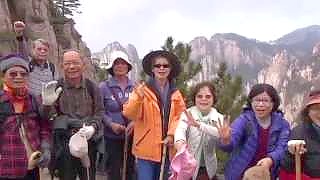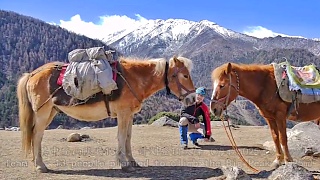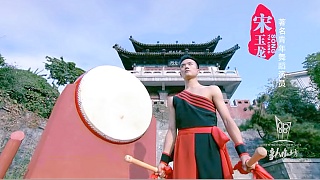With Seiu Travel ...
[640],shadow=true,start=,stop=🌹 Yongding Gate
Yongding Gate was the south gate of the outer city of Beijing's old city in the Ming and Qing dynasties. It is the highest-regulated and largest of the seven gates in Beijing's outer city Unfortunately, the original gate was demolished in 1957, and what we see now is the rebuilt one in 2004.
🌹 Temple of Heaven and Altar of the God of Agriculture
The Temple of Heaven and the Altar of the God of Agriculture are located on both sides of the central axis, showing east-west symmetry.
The Temple of Heaven is the largest and most complete existing royal worship building complex in China during the Ming and Qing dynasties.
Official website: http://www.tiantanpark.com/english/
The Altar of Agriculture is the largest existing royal place for worshipping the God of Agriculture in China. It is now converted into a museum of ancient Chinese architecture.
Official website: http://www.bjgjg.com
🌹 Zhengyang Gate
Zhengyang Gate, commonly known as the "front gate", is the south gate of the inner city of Beijing's old city, located on the south side of Tian‘anmen Square. Zhengyang Gate integrates defense, urban management and ceremonial functions and is known as the "first of the nine gates".
🌹 Tian’anmen Square and Buildings
Tian‘anmen Square and buildings are composed of the Monument to the People's Heroes, Chairman Mao Memorial Hall, the Great Hall of the People, and the National Museum of China.
Official website: http://yuyue.tamgw.beijing.gov.cn
🌹 Outer Jinshui Bridge
The Outer Jinshui Bridge is located in front of the Tian’anmen Tower. It was the only way from the imperial city to the southern suburbs for sacrifice (Temple of Heaven, Xiannongtan) in the Ming and Qing dynasties. It is also the ceremonial space for major celebrations today.
🌹 Tiananmen Gatetower
Tiananmen Gatetower was the main gate of the imperial city in the Ming and Qing dynasties. Its platform was connected to the imperial city wall, together forming the southern boundary of the imperial city in the Ming and Qing dynasties. Tiananmen Gatetower was the place where imperial edicts were issued in the Ming and Qing dynasties and major state events were held in modern times.
🌹 Duan Gate
Duan Gate is located on the south side of the Forbidden City, between Wu Gate and Tiananmen Gatetower, and is part of the court space. In the Ming and Qing dynasties, Duan Gate was the place where the emperor's ceremonial supplies were stored.
🌹 Forbidden City
The Forbidden City was the palace city of the Ming and Qing dynasties. It is an outstanding example of Chinese royal palace architecture and is located at the center of the central axis. Official website: https://intl.dpm.org.cn/index.html?l=en
🌹 Imperial Ancestral Temple and Altar of Land and Grain
The Imperial Ancestral Temple and Altar of Land and Grain are the ideal capital planning model of "left ancestor and right community", and are located on the east and west sides of the Forbidden City.
The Imperial Ancestral Temple, now the Working People's Cultural Palace, was the royal ancestral temple of the Ming and Qing dynasties.
Official website: https://www.bjwhg.com.cn
Altar of Land and Grain, now Zhongshan Park, is the most complete ancient royal altar in China for worshiping Taishe (land) and Taiji (grain).
Official website: https://www.zhongshan-park.cn
🌹 Jingshan Hill
Jingshan Mountain is the commanding height and important landscape node on the central axis of Beijing. Official website: http://www.bjjspark.com/index.jhtml
🌹 Wanning Bridge
Wanning Bridge is the oldest bridge on the central axis of Beijing. It is an important water channel in the upper reaches of Tonghui River in the capital of the Yuan Dynasty. It is also a physical object for studying the canal transportation in Beijing during the Yuan Dynasty.
🌹 Bell and Drum Tower
The Bell and Drum Tower, which was responsible for the city's timekeeping and time reporting functions during the Ming and Qing Dynasties, was an important urban management facility.
00:00:00 Highlights
00:01:09 Yongding Gate - the southern gate of Beijing's old city
00:03:42 Remains of the road in the southern section of Beijing's central axis
00:05:26 Temple of Heaven - a place for offering sacrifices to heaven
00:28:18 Altar of Agriculture - a place for offering sacrifices to the god of agriculture
00:36:09 Zhengyang Gate and Qianmen Street
00:41:49 Tian‘anmen Square and buildings
00:49:09 Forbidden City
01:12:52 Imperial Ancestral Temple - a place for offering sacrifices to royal ancestors
01:16:27 Altar of Land and Grain - a place for offering sacrifices to the land and grains
01:20:38 Jingshan
01:29:05Wanning Bridge
01:32:28 Bell and Drum Tower - the northernmost end of the central axis
Beijing, the capital city of China, is a vibrant metropolis steeped in history, culture, and modernity. Here's a brief overview of what you can expect as a tourist in Beijing:
Historical Landmarks:
The Great Wall of China: One of the most iconic structures in the world, the Great Wall is easily accessible from Beijing. Mutianyu and Badaling sections are popular among tourists.
Forbidden City (Palace Museum): A UNESCO World Heritage Site, this vast imperial palace complex was home to Chinese emperors for over 500 years. It houses numerous halls, courtyards, and historical artifacts.
Temple of Heaven: A masterpiece of Chinese architecture, this ancient temple complex served as a place of worship for emperors to pray for good harvests.
Summer Palace: A stunning ensemble of lakes, gardens, and palaces, the Summer Palace served as a retreat for emperors during the Qing dynasty.
Tiananmen Square: One of the largest city squares in the world, Tiananmen Square is flanked by important landmarks such as the Monument to the People's Heroes, the Great Hall of the People, and the Mausoleum of Mao Zedong.
Cultural Sites:
Beijing Hutongs: Explore the narrow alleyways and traditional courtyard residences of Beijing's historic neighborhoods. You can take a rickshaw tour or simply wander around on foot.
Beijing Opera: Experience traditional Chinese opera performances at venues like the Liyuan Theater or the Chang'an Grand Theatre.
798 Art District: A hub of contemporary art and culture, this former industrial area is now home to numerous galleries, studios, and cafes.
Modern Attractions:
Olympic Park: Visit iconic structures such as the Bird's Nest (National Stadium) and the Water Cube (National Aquatics Center) from the 2008 Beijing Olympics.
CBD (Central Business District): Marvel at the futuristic skyline of Beijing's modern business district, which includes landmarks like the CCTV Headquarters and the China World Trade Center Tower III.
Culinary Delights:
Peking Duck: Indulge in Beijing's most famous dish, crispy roast duck served with pancakes, scallions, and hoisin sauce.
Street Food: Explore the city's vibrant street food scene and sample local delicacies like jianbing (savory crepes), lamb skewers, and dumplings.
Practical Tips:
Transportation: Beijing has an extensive public transportation system, including the subway, buses, and taxis. However, traffic can be heavy, so plan your travels accordingly.
Language: While English is not widely spoken, especially outside tourist areas, many signs and transportation announcements are in English. It's helpful to carry a translation app or a phrasebook.
Weather: Beijing experiences four distinct seasons, with hot summers and cold winters. The best times to visit are spring (April to June) and autumn (September to October) when the weather is mild and comfortable.
Etiquette: Respect local customs and traditions, such as removing your shoes before entering someone's home and using both hands to pass or receive items.
Beijing offers a rich tapestry of experiences for tourists, blending ancient heritage with modern innovations. Whether you're fascinated by history, culture, or culinary delights, there's something for everyone in this dynamic city.
 The historical South-North axis of BeiJing
The historical South-North axis of BeiJing